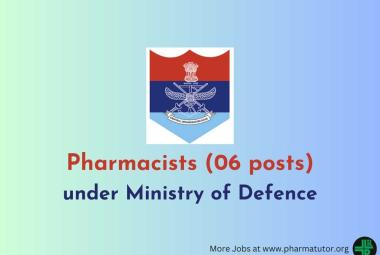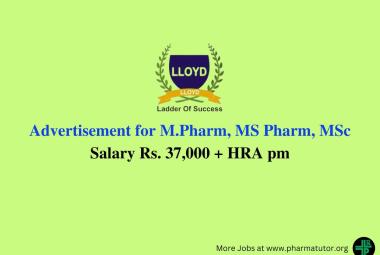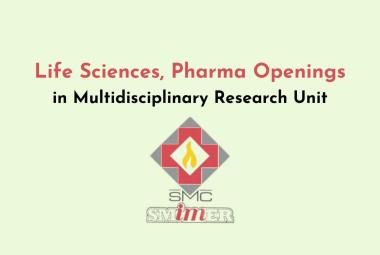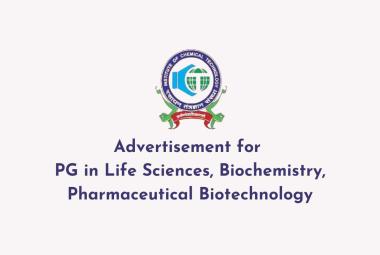About Author: Rinki Verma (Research Fellow)
Center of Experimental Medicine and Surgery,
Institute of Medical sciences,
Banaras Hindu University,
Varanasi-221005, India
Abstract
Diabetes mellitus (DM) has reached endemic scope and is an important risk factor for heart failure (HF).Itself indicated as a group of different disease due to destruction of insulin. A large number of therapy available in the management of this but most prominent therapy uses due to their unique properties; stem cell therapy. A stem cell with extensive proliferative nature may provide a precious source of islet progenitor cells. Through transplantation of insulin-producing cells offers a promising therapy to profligate diabetes. A number of studies have demonstrated that a progenitor/stem-cell population can be expanded in vitro to generate large numbers of islet progenitor cells. However, efficient and directed differentiation of these cells to an endocrine pancreatic lineage has been difficult to achieve. They review growing of the islet cells obtained from embryonic stem cell, or adult human tissues which produced insulin to treatments of diabetic patients.
Reference ID: PHARMATUTOR-ART-1098
Introduction
Globally, diabetes mellitus (DM) and have high prevalence in the world (60%) and also more population of developed countries are suffer from a cardiovascular disorder. It is the seventh leading cause of death in the United States today, with nearly 200,000 deaths reported each year. The American Diabetes Association (ADA) estimates that nearly 16 million people, or 5.9 percent of the United States population, currently have diabetes. Both are DM and diastolic heart failure, involved in the increasing to mortality worldwide. Most of consistently recognized as an imperative risk factor in the development of coronary artery disease and its complications i.e. DM, but still not more information that DM act as independent risk factor for the development and prognosis of heart failure independent of coronary artery disease (CAD) (Kannel WB et.al 1974). Systolic heart failure and diabetic cardiomyopathy due to left ventricular diastolic dysfunction (LVDD) (Zabalgoitia M 2001; Piccini JP et.al.2004) and also is frequent in the district and principally in diabetic patients(Owan TE et.al2006; Futh R 2009,5).There are large number of environmental and genetic factor are responsible for developing of diabetes mellitus including hormonal imbalance, chromosomal abnormalities and single-gene mutations etc. Due to variable penetrance of gene act as hereditary nature. Chronic diabetes characterized by abnormally high levels of the sugar glucose in the bloodstream. This excess glucose is responsible for most of the complications of diabetes, which include blindness, kidney failure, heart disease, stroke, neuropathy, and amputations. Due to autoimmune destruction of insulin-producing beta cells of the pancreas cause Juvenile diabetes i.e. Type 1. Lack of insulin leads to increased glucose level in the blood and urine and caused polyuria (frequent urination), polydipsia (increased thirst), polyphagia (increased hunger), and weight loss. In case of type 2, previously non-insulin-dependent diabetes mellitus (NIDDM) or adult-onset diabetes i.e., a metabolic disorder explicitly characterized by high blood glucose in the framework of insulin resistance and relative insulin deficiency and unlike type 1 diabetes, it is non-ketonic hyperglycemia. Long-term complications from high blood sugar can include increased risk of heart attacks, strokes, amputation, and kidney failure. For tremendous cases, circulation of limbs is affected, potentially requiring amputation. Loss of hearing, eyesight, and cognitive ability has also been associated with type 2. Type 1 can be distinguished from type 2 diabetes via a C-peptide assay, which measures endogenous insulin production.
Numerous studies have been defined for ways to replace the insulin-producing cells of the pancreas that are destroyed by a patient's own immune system. It is associated with an impaired glucose cycle, altering metabolism including so many therapeutic agent such as insulin therapy, gene therapy and also using by most of recent therapy i.e. stem cell therapy.
NOW YOU CAN ALSO PUBLISH YOUR ARTICLE ONLINE.
SUBMIT YOUR ARTICLE/PROJECT AT articles@pharmatutor.org
Subscribe to Pharmatutor Job Alerts by Email
FIND OUT MORE ARTICLES AT OUR DATABASE
Stem cells are cells found in all multi-cellular organisms. They are characterized by the ability to renew themselves through mitotic cell division and differentiate into a diverse range of specialized cell types. Research in the stem cell field grew out of findings by Canadian scientists Ernest A. McCulloch and James E. Till in the 1960s.The two broad types of mammalian stem cells are: embryonic stem cells that are isolated from the inner cell mass of blast cysts, and adult stem cells that are found in adult tissues. In a developing embryo, stem cells can differentiate into all of the specialized embryonic tissues. In adult organisms, stem cells and progenitor cells act as a repair system for the body, replenishing specialized cells, but also maintain the normal proceeds of regenerative organs, such as blood, skin, or intestinal tissues. Only stem cell have distinctive properties such self-renewal (maintaining the undifferentiated state), Obligatory asymmetric replication (divides into one daughter cell that is identical to the original stem cell, and another daughter cell that is differentiated.) and Potency (the capacity to differentiate into specialized cell types). Recent report shows stem cell can grown and in vitro, transformed into specialized cells with distinctiveness consistent with cells of various tissues such as muscles or nerves, Islet cell through cell culture (fig.1).
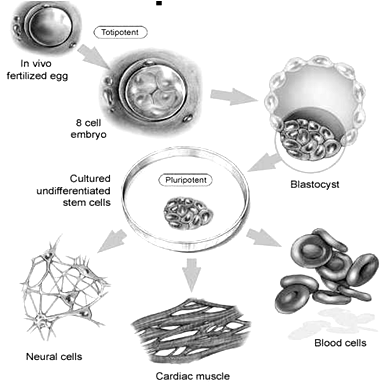
Figure – 1. Specialized differentiation of stem cell (Pluripotent) in vitro.
In the strictest sense, this requires stem cells to be either totipotent or pluripotent - to be able to give rise to any mature cell type, although multipotent or unipotent progenitor cells are sometimes referred to as stem cells. Pluripotent, embryonic stem cells originate as inner mass cells within a blastocyst (fig.2). The stem cells can become any tissue in the body, excluding a placenta. Only the morula's cells are totipotent, able to become all tissues and a placenta. Properties of stem cells can be illustrated in vitro. Thus, therefore Highly plastic adult stem cells from a variety of sources, including umbilical cord blood and bone marrow and either embryonic cell lines or autologous embryonic stem cells generated through therapeutic cloning and are routinely used in medical therapies in order to different clinical lesson.
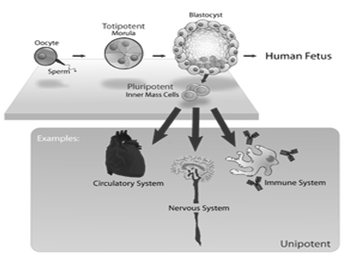
Figure – 2 Schmetic presentation of pluripotent - embryonic stem cells are able to develop into any type of cell, excepting those of the placenta. Only embryonic stem cells of the morula are totipotent: able to develop into any type of cell, including those of the placenta
Embryonic stem cell lines (ES cell lines fig.2) are cultures of cells derived from the epiblast tissue of the inner cell mass (ICM) of a blastocyst or earlier morula stage embryos. A blastocyst is an early stage embryo approximately four to five days old in humans and consisting of 50–150 cells. ES cells are pluripotent and give rise during development to all derivatives of the three primary germ layers: ectoderm, endoderm and mesoderm. In other words, they can develop into each of the more than 200 cell types of the adult body when given sufficient and necessary stimulation for a specific cell type. They do not contribute to the extra-embryonic membranes or the placenta.
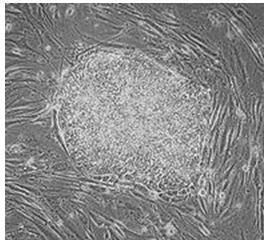
Figure – 3 Showing embryonic human stem cell in vitro.
Diabetes patients lose the function of insulin-producing beta cells within the pancreas. Human embryonic stem cells may be grown in cell culture and stimulated to form insulin-producing cells that can be transplanted into the patient. Stem cell therapy is a type of intervention strategy that introduces new cells into damaged tissue in order to treat disease or injury. They have the potential to change the face of human disease and alleviate suffering (Lindvall, O.; Kokaia, Z. 2006). The ability of stem cells to self-renew and give rise to subsequent generations with variable degrees of differentiation capacities (Weissman IL 2000). offers significant potential for generation of tissues that can potentially replace diseased and damaged areas in the body.
NOW YOU CAN ALSO PUBLISH YOUR ARTICLE ONLINE.
SUBMIT YOUR ARTICLE/PROJECT AT articles@pharmatutor.org
Subscribe to Pharmatutor Job Alerts by Email
FIND OUT MORE ARTICLES AT OUR DATABASE
Studies show their existence in many tissues and are responsible for generating differentiated cells throughout life (Morrison, S.J et.al. 1997; Watt, F.M. and Hogan B.L. 2000). There is need to understanding the cellular and molecular mechanisms of stem cell with their function in regenerative medicine, as well as in aging, tumor formation and gametogenesis (Donovan, P.J et.al .,1986; Reya, T., Morrison ;2001; Zhao, G.Q. and Garbers, D.L. 2002) and also in the maintaining proper cellular function.
There are several locations in which islet cells are produced by stem cells. In South Korean, January 2006, grown pancreatic beta cells from stem cells (taken from the umbilical cord blood of newborn offspring), which may cure diabetes. The first study to use stem cell therapy in human diabetes mellitus done in Brazil and America, initially veteran in mice and in 2007. There was developed a new method which autologous nonmyeloablative hematopoietic stem cell transplantation, due to great characterties properties of stem cell permitted regrowth of Islet cells i.e. genetically part of the patients , thus conceivably eliminating the need for immuno-suppressants ( Vinik AI, Fishwick DT, Pittenger G 2004; Mudaliar, S (2009). Subsequently, in September 2008, North Carolina have announced their success in transforming cells from human skin into cells that produce insulin.Transplants of exogenous beta cells have been performed experimentally in both mice and humans, yet it is not useful in regular medical practice to a degree due to the limited number of beta cell donors. Thus far, like any such transplant, it has motivated an immune reaction and long-term immunosuppressive drugs have been needed to protect the transplanted tissue (Shapiro AM et.al.2006). An alternative technique has been proposed to place transplanted beta cells in a semi-permeable container, isolating and protecting them from the immune system.
Discussion
A number of treatments for chronic diabetic complications are available. A high-sodium diet or mineral corticoids may worsen supine hypertension and trigger congestive heart failure. Stem cell therapy have ability to cure various chronic diseases such as diabetic patients. Other than it some important therapy like microscopic or nanotechnological approaches are under investigation as well, in one proposed case with implanted stores of insulin metered out by a rapid response valve sensitive to blood glucose levels. At least two approaches have been demonstrated in vitro. These are, in some sense, closed-loop insulin pumps.
References
- Lindvall, O.; Kokaia, Z. (2006). "Stem cells for the treatment of neurological disorders". Nature 441 (7097): 1094–1096.
- Kannel WB, Hjortland M, Castelli WP(1974): Role of diabetes in congestive heart failure: the Framingham study. Am J Cardiol , 34:29-34.
- Piccini JP, Klein L, Gheorghiade M, Bonow RO: New insights into diastolic heart failure: role of diabetes mellitus. Am J Med 2004, 116(Suppl 5A):64S-75S.
- Zabalgoitia M, Ismaeil MF, Anderson L, Maklady FA (2001): Prevalence of diastolic dysfunction in normotensive, asymptomatic patients with well-controlled type 2 diabetes mellitus. Am J Cardiol , 87:320-323.
- Futh R, Dinh W, Bansemir L, Ziegler G, Bufe A, Wolfertz J, Scheffold T, Lankisch M (2006): Newly detected glucose disturbance is associated with a high prevalence of diastolic dysfunction: double risk for the development of heart failure? Acta Diabetol 46:335-8.
- Owan TE, Hodge DO, Herges RM, Jacobsen SJ, Roger VL, Redfield MM (2006): Trends in prevalence and outcome of heart failure with preserved ejection fraction. N Engl J Med, 355:251-259.
- Weissman IL (January 2000). "Stem cells: units of development, units of regeneration, and units in evolution". Cell 100 (1): 157–68.
- Morrison, S.J., Shah, N.M. and Anderson, D.J. (1997). Regulatory mechanisms in stem cell biology. Cell, 88, 287–298.
- Watt, F.M. and Hogan B.L. (2000 ) Out of Eden: stem cells and their niches. Science, 287, 1427–1430.
- Donovan, P.J., Stott, D., Cairns, L.A., Heasman, J. and Wylie, C.C. (1986) Migratory and postmigratory mouse primordial germ cells behave differently in culture. Cell, 44, 831–838.
- Reya, T., Morrison, S.J., Clarke, M.F. and Weissman, I.L. (2001) Stem cells, cancer, and cancer stem cells. Nature, 414, 105–111.
- Zhao, G.Q. and Garbers, D.L. (2002) Male germ cell speci?cation and differentiation. Dev. Cell, 2, 537–547.
- Mudaliar, S (2009). "Serum glucose control in diabetic patients with cardiovascular disease: should we be less aggressive?". Current atherosclerosis reports 11 (5): 384–90
- Shapiro AM, Ricordi C, Hering BJ, et al. (September 2006). "International trial of the Edmonton protocol for islet transplantation". The New England Journal of Medicine 355 (13): 1318–30.
- Vinik AI, Fishwick DT, Pittenger G (2004). "Advances in diabetes for the millennium: toward a cure for diabetes". MedGenMed 6 (3 Suppl): 12
NOW YOU CAN ALSO PUBLISH YOUR ARTICLE ONLINE.
SUBMIT YOUR ARTICLE/PROJECT AT articles@pharmatutor.org
Subscribe to Pharmatutor Job Alerts by Email
FIND OUT MORE ARTICLES AT OUR DATABASE




